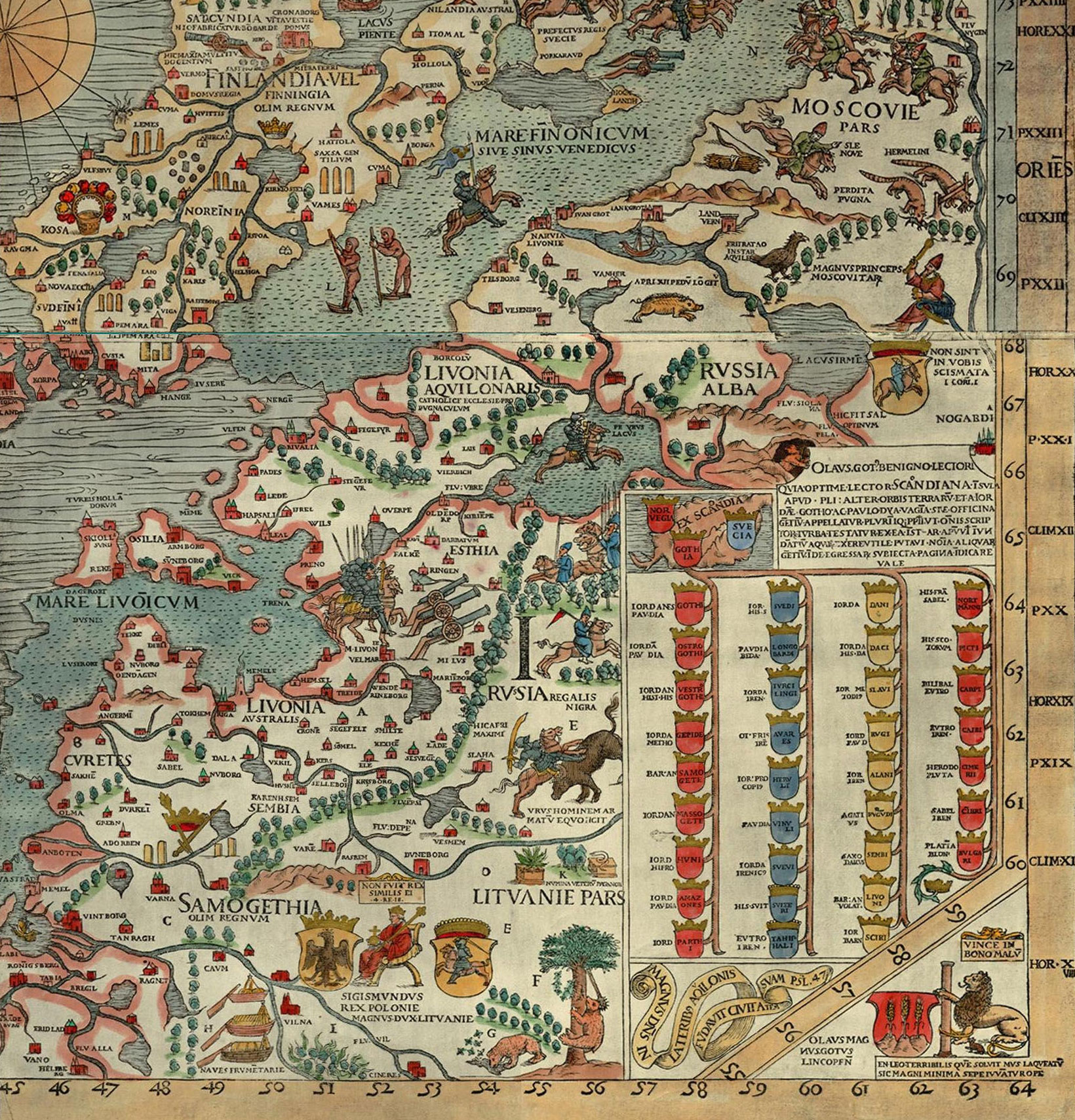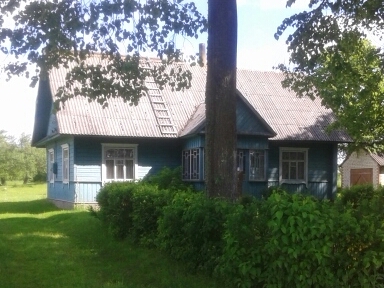|
Jonas Lapėnas
Jonas Lapėnas (5 August 1891 – 27 June 1937) was a Lithuanian businessman and activist of the Lithuanian Nationalist Union. He was director of the meat processing and export company Maistas and chairman of the cooperative union Lietūkis. He was chairman of the Nationalist Union in 1929–1931. Born to a family of poor farm workers, Lapėnas did not receive any formal education. He became involved with trade and cooperatives from an early age. Acquaintance with Vladas Mironas, a close friend of President Antanas Smetona, helped Lapėnas launch his career within the Nationalist Union. He became chairman of the union, but was demoted due to disagreements with Smetona over the party's role in the Lithuanian government. In September 1935, Lapėnas was arrested on corruption charges because Maistas sold meat to a shop owned by his brother at prices far below the market. District court sentenced him to eight years in prison and ordered him to pay a restitution of 500,000 Lithuanian ... [...More Info...] [...Related Items...] OR: [Wikipedia] [Google] [Baidu] |
Russian Empire
The Russian Empire was an empire that spanned most of northern Eurasia from its establishment in November 1721 until the proclamation of the Russian Republic in September 1917. At its height in the late 19th century, it covered about , roughly one-sixth of the world's landmass, making it the list of largest empires, third-largest empire in history, behind only the British Empire, British and Mongol Empire, Mongol empires. It also Russian colonization of North America, colonized Alaska between 1799 and 1867. The empire's 1897 census, the only one it conducted, found a population of 125.6 million with considerable ethnic, linguistic, religious, and socioeconomic diversity. From the 10th to 17th centuries, the Russians had been ruled by a noble class known as the boyars, above whom was the tsar, an absolute monarch. The groundwork of the Russian Empire was laid by Ivan III (), who greatly expanded his domain, established a centralized Russian national state, and secured inde ... [...More Info...] [...Related Items...] OR: [Wikipedia] [Google] [Baidu] |
Daugai
Daugai (, see also other names) is a small city in Alytus district municipality, Lithuania. It is situated some to east from Alytus on the shores of Lake Didžiulis. The city has the Church of Divine Providence () dating from 1862, extant bazaar square, Daugai Vladas Mironas Vladas Mironas (; 22 June 1880 – 18 February 1953) was a Lithuanian Catholic priest and politician. He was one of the twenty signatories of the Act of Independence of Lithuania and served as the Prime Minister of Lithuania from March 1938 to M ... secondary school, art school, agricultural school, kindergarten ''Bangelė'', post office, cultural center, library, polyclinic and hospital, many commercial enterprises. Names Versions of the name in other languages include: /Dauhi, or Dowgi, /Daugi, . References External links * Website of the secondary schoolDaugai at the International Jewish Cemetery Project Alytus District Municipality Cities in Lithuania Cities in Alytus County {{Alytu ... [...More Info...] [...Related Items...] OR: [Wikipedia] [Google] [Baidu] |
Queen Louise Bridge
The Queen Louise Bridge (; ; ) is a bridge over the Neman River on the Lithuania–Russia border, that connects the Lithuanian town of Panemunė and the Russian city of Sovetsk, Kaliningrad Oblast, Sovetsk (historically: Tilsit). It is named after Queen Louise of Mecklenburg-Strelitz. Gallery Bundesarchiv B 145 Bild-P017308, Tilsit, Memelbrücke nach Litauen.jpg, Bridge in 1930 Königin Luisen Brücke.jpg, Part of the bridge raised in 1911 Königin-Luise Brücke über die Memel in Tilsit Juni 1941.jpg, Bridge in 1941 Queen Louise Bridge decorated with Vytis (Waykimas) in Panemunė, Lithuania, 1937.jpg, Lithuanian-side of the bridge in Panemunė with the coat of arms of Lithuania in 1937 Мост Королевы Луизы 03.jpg, Portrait of Queen Louise of Mecklenburg-Strelitz in the Russian side of the bridge Tilsit Louisenbrücke-001.jpg, View from the Lithuanian side towards the Russian side of the bridge See also * List of international bridges References Road ... [...More Info...] [...Related Items...] OR: [Wikipedia] [Google] [Baidu] |
Panemunė
Panemunė (; ) is the smallest settlement with city status in Lithuania. It is situated on the banks of the Nemunas River opposite Sovetsk, south from Pagėgiai, in Tauragė County. It is a border checkpoint for traffic to and from Russia (Kaliningrad Oblast). The Queen Louise Bridge originally built in 1907 links Panemunė to the city of Sovetsk (Tilsit until 1946) just south across the river. The landmark arch now lies on the Russian side. The city is known as the smallest official city in Lithuania, despite its tiny population. History The area comprising today's Panemunė used to be the northern trans-Memel (Neman) suburb of Tilsit, then a Prussian and later also German town (as of 1871). Tilsit sat close to the border between Germany and Russia. After Germany's defeat in World War I, the trans-Memel suburb was disentangled from Tilsit (with the rest of the Memelland/Klaipėda Region detached from the Province of East Prussia) in 1920. The suburb was given the name ''Ü ... [...More Info...] [...Related Items...] OR: [Wikipedia] [Google] [Baidu] |
Tauragė
Tauragė (; see #Names and etymology, other names) is an industrial city in Lithuania, and the capital of Tauragė County. In 2020, its population was 20,956. Tauragė is situated on the Jūra, Jūra River, close to the border with the Kaliningrad Oblast, and not far from the Baltic Sea coast. Although first mentioned in 1507, Tauragė did not receive its town privileges, city charter until 1924, and its coat of arms (a silver hunting horn in a red field) until 1997. The previously small town was significantly developed in the 19th century and early 20th century, however its architecture suffered devastating damages during World War I and World War II. Notable surviving buildings in the city include the Tauragė castle, castle (19th century Russian Empire customs), 19th century Post office, buildings from the 20th century inter-war period, several churches: the Lutheran (built in 1843), the Catholic (1904) and Orthodox (1933). Lithuanian, Swedish and Danish factories operate in ... [...More Info...] [...Related Items...] OR: [Wikipedia] [Google] [Baidu] |
1935 Suvalkija Farmers' Strike
The farmers' strike in Suvalkija was a civil unrest in interwar Lithuania in 1935. It mostly affected Suvalkija (southern Lithuania) where farmers demanded aid to help with a severe economic crisis. The strike was caused by more than threefold decrease in prices of agricultural goods due to the collapse of Lithuanian exports. Germany (the largest trading partner) ceased Lithuanian imports due to the worsening political situation (territorial claims to the Klaipėda Region and specifically the trial of Neumann and Sass), while England (the second largest export market) enacted protectionist policies due to the Great Depression. As a result, farmers could not pay their loans or taxes and their discontent was fanned by the outlawed Communist Party of Lithuania. Their demands were mostly financial (e.g. lower taxes, deferral of loans), but there were also political demands to replace the authoritarian regime of President Antanas Smetona. They began organizing in May 1935 and started ... [...More Info...] [...Related Items...] OR: [Wikipedia] [Google] [Baidu] |
Iron Wolf (organization)
Iron Wolf () was a semi-official Lithuanian militarized organization active in 1928–1930, led by Prime Minister Augustinas Voldemaras. Established at the end of 1927 by the ruling Lithuanian Nationalist Union to help suppress its opposition, it was inspired by the Blackshirts, an Italian fascist organization. The organization was secret; it was officially a sports union from May 1928. The organization spied on its political opponents, engaged in limited physical coercion, and launched propaganda initiatives. It had more than 4,000 members. When Voldemaras was removed as Prime Minister in September 1929, Antanas Smetona attempted to install his men. When that failed, the organization was officially closed on 24 May 1930. However, supporters of Voldemaras remained active and became known as '' Voldemarininkai'' ("Voldemarians", "Voldemarists"). They planned several anti-Smetona coups, became increasingly sympathetic to fascism, and often collaborated with Nazis during the Ge ... [...More Info...] [...Related Items...] OR: [Wikipedia] [Google] [Baidu] |
Augustinas Voldemaras
Augustinas Voldemaras (16 April 1883 – 16 May 1942) was a Lithuanian nationalist political figure. He briefly served as the country's first prime minister in 1918 and continued serving as the minister of foreign affairs until 1920, representing the fledgling Lithuanian state at the Versailles Peace Conference and the League of Nations. After some time in academia, Voldemaras returned to politics in 1926, when he was elected to the Third Seimas. Dissatisfied with the left-wing government of President Kazys Grinius, Voldemaras and fellow nationalist Antanas Smetona supported the military coup d'état in December 1926 and he was appointed as the prime minister for a second time. A brilliant orator, Voldemaras represented the radical wing of the Lithuanian Nationalist Union that was increasingly critical of the more moderate policies of President Smetona. Smetona had Voldemaras removed from office in September 1929 and exiled to Zarasai. Voldemaras was arrested in 1934 after th ... [...More Info...] [...Related Items...] OR: [Wikipedia] [Google] [Baidu] |
Vairas
''Vairas'' (literally: ''steering wheel''; also translated as ''helm'' or ''rudder'') was a Lithuanian-language political and cultural newspaper published by Antanas Smetona and the Lithuanian Nationalist Union, the ruling party in Lithuania in 1926–1940. It was published three separate times. ''Vairas'' was first established in January 1914 when Smetona departed '' Viltis''; it was discontinued due to World War I. The newspaper was briefly revived in September 1923 when Smetona and Augustinas Voldemaras harshly criticized their political opponents and the Lithuanian government. Due to the anti-government rhetoric, their newspapers were closed by state censors one after another, but they would quickly establish a new newspaper under a new title. ''Vairas'' was closed in February 1924. The newspaper was reestablished as a cultural magazine in 1929 with the backing of the authoritarian regime of Smetona. In 1939, it became a weekly political magazine that pushed an agenda of radical ... [...More Info...] [...Related Items...] OR: [Wikipedia] [Google] [Baidu] |
Lietuvos Aidas
''Lietuvos aidas'' (literally: ''Echo of Lithuania'') is a daily newspaper in Lithuania. It was established on September 6, 1917, by Antanas Smetona, and became the semi-official voice of the newly formed Lithuanian government. When the government evacuated from Vilnius to the temporary capital of Lithuania, temporary capital, Kaunas, it ceased publication. The newspaper was revived in 1928 as the newspaper of the Lithuanian government and became the most popular newspaper in Lithuania. At its peak, it published three daily editions with combined circulation of 90,000 copies. World War II disrupted its publication. In 1990, after Lithuania declared independence from the Soviet Union, the newspaper once again became the official newspaper of the Supreme Council of the Republic of Lithuania. At the end of 1992, its circulation reached 103,000 copies. However, it was soon privatized and faced shrinking readership, financial difficulties, and other controversies. In April 2006, bankrupt ... [...More Info...] [...Related Items...] OR: [Wikipedia] [Google] [Baidu] |
Jonas Vailokaitis
Jonas Vailokaitis (; 25 June 1886 – 16 December 1944) was a Lithuanian banker and industrialist. He as his brother Juozas Vailokaitis (1880–1953) were widely regarded as the richest men in interwar Lithuania. He was Signatories of the Act of Independence of Lithuania, one of the twenty signatories of the Act of Independence of Lithuania. Vailokaitis was educated at the in St. Petersburg. In 1912, brothers Jonas and Juozas moved to Kaunas and established the Company of Brothers Vailokaitis which provided loans to Lithuanians who wanted to buy land. During World War I, the company sold supplies and food to both the Russian Imperial Army and the Imperial German Army. At Vilnius Conference of 1917, Vailokaitis was elected to the Council of Lithuania which adopted the Act of Independence of Lithuania on 16 February 1918. In 1919, Vailokaitis co-founded the Farmers' Association on which ticket he was elected to the Constituent Assembly of Lithuania in April 1920. In the assembly, he ... [...More Info...] [...Related Items...] OR: [Wikipedia] [Google] [Baidu] |


